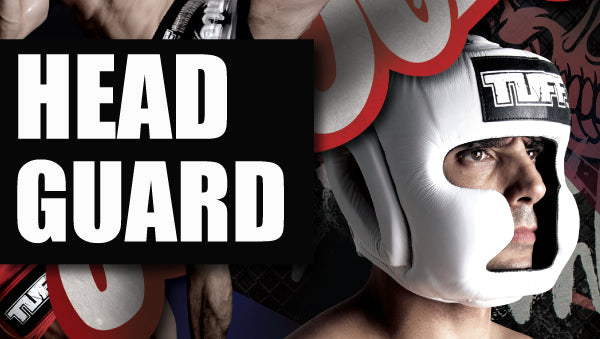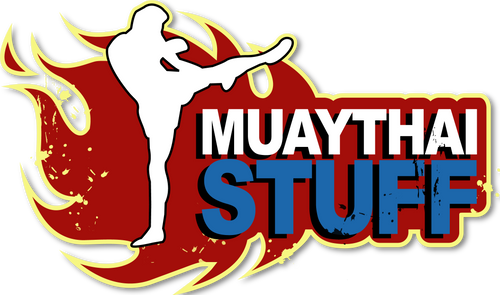How to buy Muay Thai head guard

Wearing a head guard is one of the most important ways to prevent, or reduce the neurological injuries. However, this equipment isn’t a total solution for a head injury, but it helps to lessen its effect. It is very important to wear head protection in amateur competitions, especially in the combat sport.
It also allows Muay Thai fighters to throw elbows without causing damage to your sparring partners. Just as elbow padding is needed to protect them from sparring damage, wearing the head guard is just as important to protect sparring partners from damage caused by any unnecessary incident.
The head guard allows for protection of the face but cannot protect against bruises. During a major impact, it can be causing damage to the brain. Even with a full-protection helmet, a fighter can lose consciousness by receiving a kick or an uppercut to the jaw or in the eyes.

What to consider when you buying head guard?
Comfortable Feel and Fit
The head guard needs to be tight enough to stay in place, but not so tight that it feels uncomfortable.
Trying out new head guard requires a period of adjustment, especially if it is your first one. Give yourself time to get used to it and don’t expect love at first use.
Another factor is how the chin strap fits. If it fits loosely, the gear will also feel loose. If the strap fits too tightly, the gear will wear too tightly on your head, or the strap will obstruct around your chin. The right head guard will neither fit too loose or too tight, but comfortable.

Visibility
Visibility is another extremely important factor in selecting the correct head guard. Generally speaking, the head guard that provides maximum protection also provides minimal visibility. That means that the best protection head guard sacrifices your ability to see.
Obviously, not seeing incoming attacks is a problem because that means that you will get hit in the head with greater frequency than you should, leading to more severe brain damage. Therefore, you must have a head guard that provides enough visibility to defend strikes from various directions.

The thickness of cheek and forehead padding is also a determining factor for visibility. Thicker padding means less wide vision, which means that you will not be able to see from important angles. On the other hand, thicker padding will have the effect of weighing down the face and head.

The Differences Between Combat Head Guard
A difference between Muay Thai and Western Boxing is the presence of clinching in Muay Thai. Because of this difference, Muay Thai gear is less bulky than Western Boxing gear. When the head gets trapped in the clinch, you can’t put up with gear that won’t let you move back and forward so you can get yourself free.

Extended clinching is not allowed in boxing, so head protection in boxing is considerably thicker since the head won’t be trapped in a prolonged clinch. This additional thickness in boxing head protection provides extra protection from head strikes, but it also makes it less flexible than Muay Thai head guard.

Built Quality
Padding should be thick enough to absorb the impact of kicks and punches but not too thick cause it may obscure your vision. This one is more of personal preference. It really down to what level of protection you are willing to accept at the expense of your field of vision.

If you are willing to spend more money you will get a lighter head guard. They are built of quality materials and multilayer padding that will offer a better level of protection than cheaper and bulkier ones. It should be as light as possible yet still offer good head protection. The longer you spar the heavier it feels on your head.
It also allows Muay Thai fighters to throw elbows without causing damage to your sparring partners. Just as elbow padding is needed to protect them from sparring damage, wearing the head guard is just as important to protect sparring partners from damage caused by any unnecessary incident.
The head guard allows for protection of the face but cannot protect against bruises. During a major impact, it can be causing damage to the brain. Even with a full-protection helmet, a fighter can lose consciousness by receiving a kick or an uppercut to the jaw or in the eyes.

What to consider when you buying head guard?
Comfortable Feel and Fit
The head guard needs to be tight enough to stay in place, but not so tight that it feels uncomfortable.
Trying out new head guard requires a period of adjustment, especially if it is your first one. Give yourself time to get used to it and don’t expect love at first use.
Another factor is how the chin strap fits. If it fits loosely, the gear will also feel loose. If the strap fits too tightly, the gear will wear too tightly on your head, or the strap will obstruct around your chin. The right head guard will neither fit too loose or too tight, but comfortable.

Visibility
Visibility is another extremely important factor in selecting the correct head guard. Generally speaking, the head guard that provides maximum protection also provides minimal visibility. That means that the best protection head guard sacrifices your ability to see.
Obviously, not seeing incoming attacks is a problem because that means that you will get hit in the head with greater frequency than you should, leading to more severe brain damage. Therefore, you must have a head guard that provides enough visibility to defend strikes from various directions.

The thickness of cheek and forehead padding is also a determining factor for visibility. Thicker padding means less wide vision, which means that you will not be able to see from important angles. On the other hand, thicker padding will have the effect of weighing down the face and head.

The Differences Between Combat Head Guard
A difference between Muay Thai and Western Boxing is the presence of clinching in Muay Thai. Because of this difference, Muay Thai gear is less bulky than Western Boxing gear. When the head gets trapped in the clinch, you can’t put up with gear that won’t let you move back and forward so you can get yourself free.

Extended clinching is not allowed in boxing, so head protection in boxing is considerably thicker since the head won’t be trapped in a prolonged clinch. This additional thickness in boxing head protection provides extra protection from head strikes, but it also makes it less flexible than Muay Thai head guard.

Built Quality
Padding should be thick enough to absorb the impact of kicks and punches but not too thick cause it may obscure your vision. This one is more of personal preference. It really down to what level of protection you are willing to accept at the expense of your field of vision.

If you are willing to spend more money you will get a lighter head guard. They are built of quality materials and multilayer padding that will offer a better level of protection than cheaper and bulkier ones. It should be as light as possible yet still offer good head protection. The longer you spar the heavier it feels on your head.





